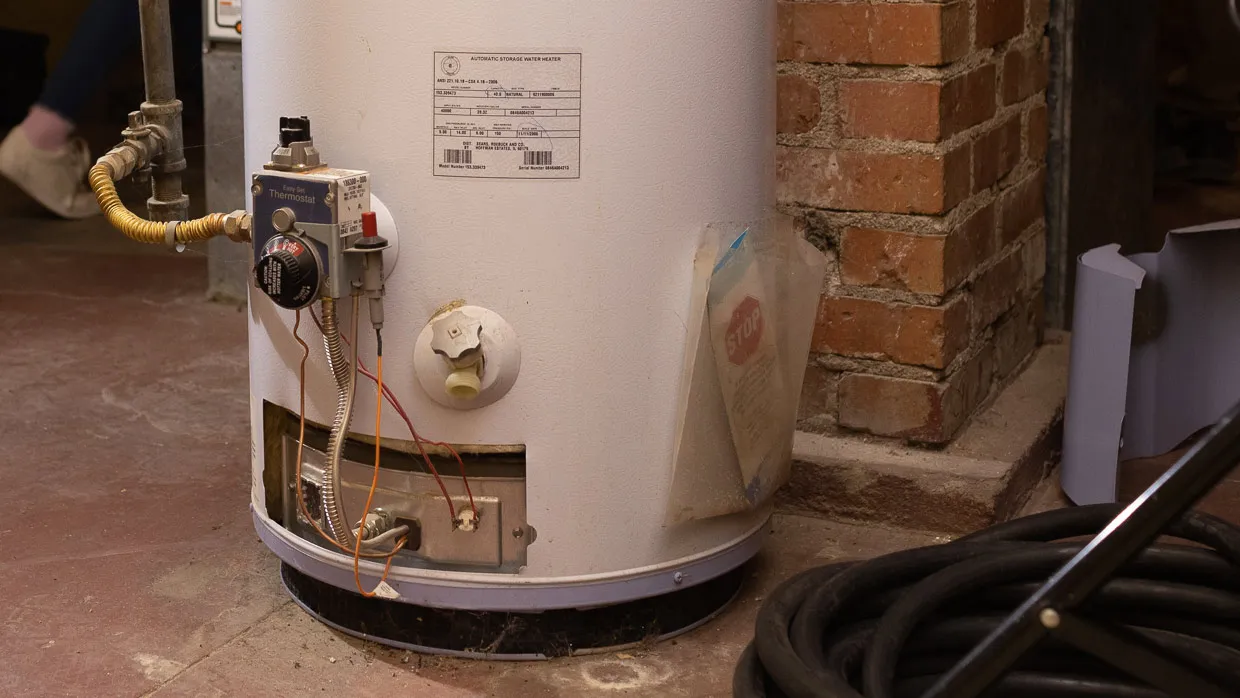
Fall is the perfect time of year for a water heater flush
All water heater tanks require a regular “flush out” to remove accumulated (and trapped) sediment, mineral deposits, and other forms of buildup at the bottom of the tank. Ideally, as a homeowner, you should flush your water heater tank twice per-year. However, at the bare minimum, an annual water heater flush is an absolute must.A water heater that goes too long between flushes will:
- Become less energy-efficient, as accumulated sediment and minerals block the heating element from warming the water as effectively.
- Live a shorter life, as corrosive elements will be allowed to build up inside the tank with uninterrupted regularity.
In other words, taking care of regular maintenance for your water heater can end up costing you money, both in the present and in the future. The good news is that a water heater flush is easy for most homeowners to perform themselves and only takes a few minutes.However, if you need assistance with this or any other water heater maintenance project, be sure to call our team of experienced plumbers here in Albuquerque and Santa Fe. Since 1928, the team at Wagner has built our reputation on helping local homeowners with their home maintenance needs.
Performing a water heater flush
Step #1: Turn off the system and cut the power
Start by turning your water heater’s thermostat to off and then—depending on the type of system you have:
- Gas Water Heaters: Shut off the gas line to the water heater.
- Electric Water Heaters: At your home’s breaker box, turn off the power to the circuit the water heater is on. If you’re not sure what circuit the water heater is on specifically, you may want to turn off power to the entire home for this process.
Step #2: Turn off the cold water supply and run hot water
Your water heater has a cold water intake supply line with an adjustable knob near the top of the water heater. You’ll want to shut this off so that no new water is entering the tank. Then, at your kitchen sink or in a bathtub, run the hot water running. This latter step is critical to preventing issues with the lines while draining.
Step #3: Position a bucket (or connect a hose)
Near the bottom of the water heater tank is a spigot that controls the outflow of water for drainage purposes. You have two options here:
- You can position a large bucket underneath the spigot and drain directly into the bucket. As you can probably imagine, there’s more water in the tank than your bucket can hold, so you may need to empty the bucket once or twice while draining. As we’ll discuss below, it’s not always necessary to drain the water heater entirely, however.
- You can connect a garden hose to the drainage spigot and run the hose to a bucket. This is especially useful if the placement of your water heater makes positioning a bucket directly beneath difficult.
Either way, the bucket is crucial. As the water drains out of the water heater, you’ll be able to see it in the bucket, which will provide you with a visual key as to when to stop.
Step #4: Start the drainage process
Turn that drainage spigot to open. At first, the water coming out of the water heater and into the bucket will most likely be brown or rust-colored. As you continue draining, this water will eventually start to run clear. If it’s been a while since your last water heater drain, you may need to drain the entire tank to remove all the accumulated sediment.
Step #5: Flush out the remainder
Once you either have clear water or have drained the entire tank of all its water, it’s time to flush. With the bucket and hose still positioned as before, open that cold water supply valve you closed in Step 2. This will allow cold water to run through the tank and into the bucket, carrying any remaining sediment or buildup along with it. Again, keep an eye on your bucket: as soon as its water is clear, you’re done. You can empty the bucket, detach the hose, close the drainage valve, and turn your water heater back on.
Call Wagner for all your water heater maintenance needs
The team at Wagner is here to help with all your water heater maintenance and upkeep needs, including your annual flush. If you need assistance with the flush process—or have reason to believe that your water heater isn’t working properly—you’ll want to call our team for service. We maintain, repair, and replace water heaters here in Albuquerque and Santa Fe.




.webp)


